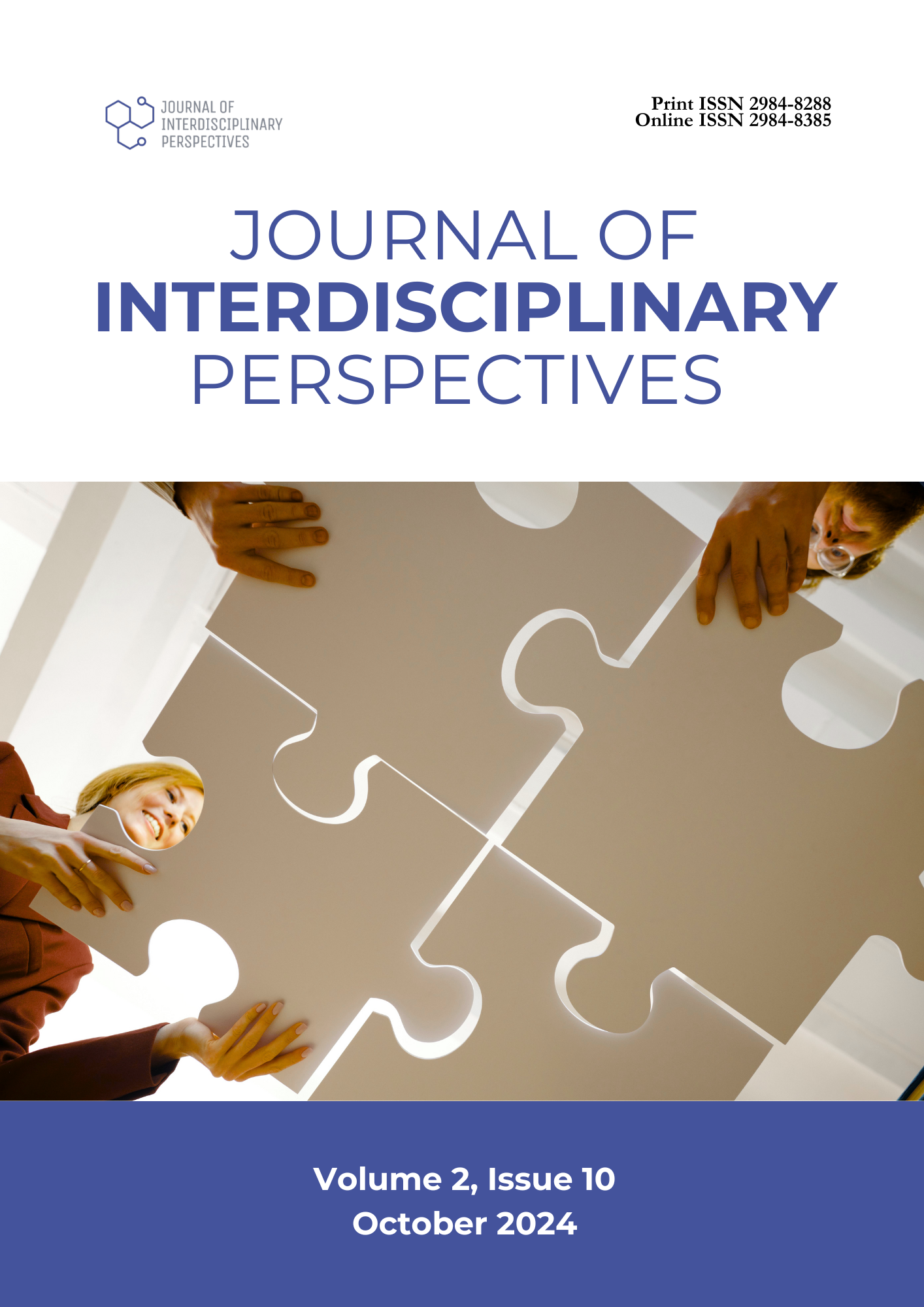Suicide Prevention Mechanism Survey: Basis for Mental Health Intervention Program
DOI:
https://doi.org/10.69569/jip.2024.0390Keywords:
Intervention program, Mental health, Prevention mechanism, Resilient education, SuicideAbstract
To answer the call for a race against suicide, the study was conducted in pursuit of identifying the situation of the learners in their mental well-being as a key in determining a school’s mental health intervention program. The study used a mixed method research design, which utilized convergent parallel mixed method using an adopted and modified survey questionnaire for quantitative data and data triangulation for qualitative data and assessing whether the data converge or diverge. The study involves one hundred (100) pupil respondents chosen through purposive sampling. The study used descriptive statistics to analyze and interpret the data using weighted mean and standard deviation. Meanwhile, Colizzi’s 1978 method of analysis and interpretation was adopted for qualitative data. Results revealed a high prevalence of mental health problems experienced in terms of education, physical body, sexuality, and depression, which needs an intervention plan. However, there is a low prevalence of mental health problems among respondents in terms of home, violence, and drugs, which does not need an intervention plan. Meanwhile, the challenges encountered by the learners’ themes, such as education, stress/depression, and violence, emerged. For the impact, the emergent themes are mentally disturbed, low academic performance, and personal growth. On the other hand, prayer and communication emerged for coping mechanisms and positivity, and stress tolerance and communication emerged for insights. The study found that mental health fosters huge problems, especially for vulnerable individuals like children. They are the ones who cannot handle the anxiety and depression surrounded by many factors. Learners have experienced mental health issues, specifically in education, physical body, sexuality, and depression, which should not be disregarded because this can greatly affect their mental well-being. The study recommended having a school’s mental health intervention plan focusing on education, physical body, sexuality, and depression.
Downloads
References
Almarshad, A., Alharbi, R., & Alsuhaiban, K. (2019). Depression and anxiety among high school students at Qassim Region. Journal of Family Medicine and Primary Care, 8(2), 504-510. http://doi.org/10.4103/jfmpc.jfmpc_383_18
Beirão, D., Monte, H., & Amaral, M. (2020). Depression in adolescence: A review. Middle East Curr Psychiatry, 27, 50 (2020). https://doi.org/10.1186/s43045-020-00050-z
Borah, R. (2023). Impact of home on the mental health of adolescent students. International Journal of Scientific and Research Publications, 13(4), 65-67. http://doi.org/10.29322/IJSRP.13.04.2023.p13610
Chaudhry, N., Asif, A., & Imran, N. (2022). Effectiveness of a school-based mental health intervention for schoolteachers in urban Pakistan: A randomized controlled trial. Child Adolesc Psychiatry Ment Health, 16, 33 (2022). https://doi.org/10.1186/s13034-022-00470-1
Colizzi, M., Lasalvia, A., & Ruggeri, M. (2020). Prevention and early intervention in youth mental health: Is it time for a multidisciplinary and trans-diagnostic model for care? International Journal of Mental Health Systems, 90(1), 147-158. http://doi.org/10.47119/IJRP1009011220212532
Corrales, C. (2023, May 13). Experts seek media sensitivity amid Cagayan de Oro surge in suicides. Rappler.com. Retrieved from https://www.rappler.com/philippines/mindanao/experts-ask-media-sensitivity-surge-suicide-cagayan-de-oro-may-2023/
Deak, V., & Mengga, R. (2023). The role of prayer as spiritual-religious coping in the healing process in the perspective of Christian psychology. International Journal of Social and Management Studies (IJOSMAS). https://ijosmas.org/index.php/ijosmas/article/download/338/256/843
Delfin, A., et al. (2021). Student’s mental wellbeing in the current normal. International Journal of Research Publications, 90(1), 147-158. http://doi.org/10.47119/IJRP1009011220212532
Deng, Y., Cherian, J., Khan, N., Kumari, K., Sial, M. S., Comite, U., Gavurova, B., & Popp, J. (2022). Family and academic stress and their impact on students' depression level and academic performance. Frontiers in Psychiatry, 13:869337. http://doi.org/10.3389/fpsyt.2022.869337
Engzell, P. E., Arun, F., & Verhagen, M. (2021). Learning loss due to school closures during the COVID-19 pandemic. Proceedings of the National Academy of Sciences, 118(17), 1-7. http://doi.org/10.1073/pnas.2022376118
Facts and Figures About Runaway and Homeless Youth. (2019). National Clearinghouse on Homeless Youth and Families. Retrieved from https://rb.gy/oa93az
Kwok, S. Y. C. L., & Fang, S. (2022). A longitudinal study of the impact of parental discipline on wellbeing among primary school students in China: The roles of school attachment and growth mindset. Child Abuse & Neglect, 124, 105435. https://doi.org/10.1016/j.chiabu.2021.105435
Fleming, C. (2020). Food and me. How adolescents experience nutrition across the world. A companion report to The State of the World’s. Retrieved from https://rb.gy/nmqpc5
Hess, S. (2022). Effects of inter-parental conflict on children’s social well-being and the mediation role of parenting behavior. Applied Research in Quality of Life, 17(0), 2059–2085. http://doi.org/10.1007/s11482-021-10022-y
Li, F. (2022). Impact of COVID-19 on the lives and mental health of children and adolescents. Frontiers in Public Health, 10, 925213. https://doi.org/10.3389/fpubh.2022.925213
Mani, A., Bazrafshan, M.-R., Sharif, F., & Molazem, Z. (2016). Exploring the risk factors contributing to suicide attempt among adolescents: A qualitative study. Iranian Journal of Nursing and Midwifery Research, 21(1), 93–99. https://doi.org/10.4103/1735-9066.174747
Maramag, G. (2020). Mental health hotlines bolstered amidst a surge of calls during COVID-19 pandemic. Retrieved from https://rb.gy/o893ch
Marsh, S., Dobson, R., & Maddison, R. (2020). The relationship between household chaos and child, parent, and family outcomes: A systematic scoping review. BMC Public Health, 20(1), 513. https://doi.org/10.1186/s12889-020-08587-8
Mental health of adolescents. (2021a). World Health Organization (WHO). Retrieved from https://www.who.int/news-room/fact-sheets/detail/adolescent-mental-health
Moore, A., Nguyen, A., Rivas, S., Bany-Mohammed, A., Majeika, J., & Martinez, L. (2021). A qualitative examination of the impacts of financial stress on college students’ well-being: Insights from a large, private institution. SAGE Open Medicine, 9, 205031212110181. https://doi.org/10.1177/20503121211018122
Burgić Radmanović, M. (2020). Mental disorders in sexually abused children. Psychiatria Danubina, 32(Suppl 3), 349–352. https://pubmed.ncbi.nlm.nih.gov/33030451/
Radu, M. B. (2019). Bridging families and schools to prevent youth from running away from home. Journal of Youth Development, 14(3), 45–69. https://doi.org/10.5195/jyd.2019.737
Rajan, S., & Nickerson, A. (2022). The effects of firearm violence on children: Implications for its prevention in our schools and communities. Retrieved from https://rb.gy/te56ir
Salagados, L. (2023, April 24). Another teener jumps off Maharlika Bridge. Gold Star Daily. Retrieved from https://mindanaogoldstardaily.com/archives/137490
Thakur, A. (2020). Mental health in high school students at the time of covid-19: A student’s perspective. Journal of the American Academy of Child and Adolescent Psychiatry, 59(12), 1309–1310. https://doi.org/10.1016/j.jaac.2020.08.005
Tianyu, Y., Honghao, J., & Po, Y.(2021). The influence of adolescents’ romantic relationship on individual development: Evidence from China. International Journal of Chinese Education, 10(3), 221258682110700. https://doi.org/10.1177/22125868211070036.
Downloads
Published
How to Cite
Issue
Section
License
Copyright (c) 2025 Journal of Interdisciplinary Perspectives

This work is licensed under a Creative Commons Attribution-NonCommercial 4.0 International License.








